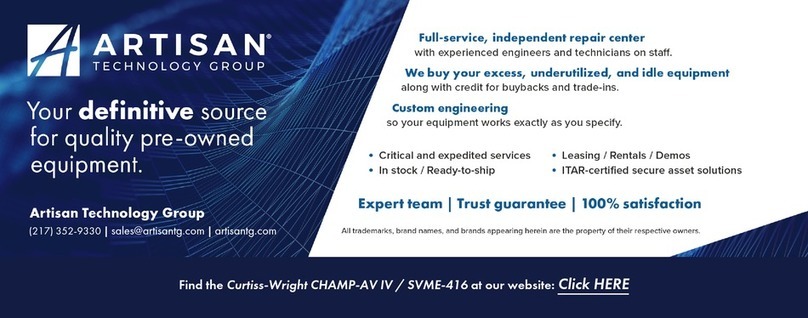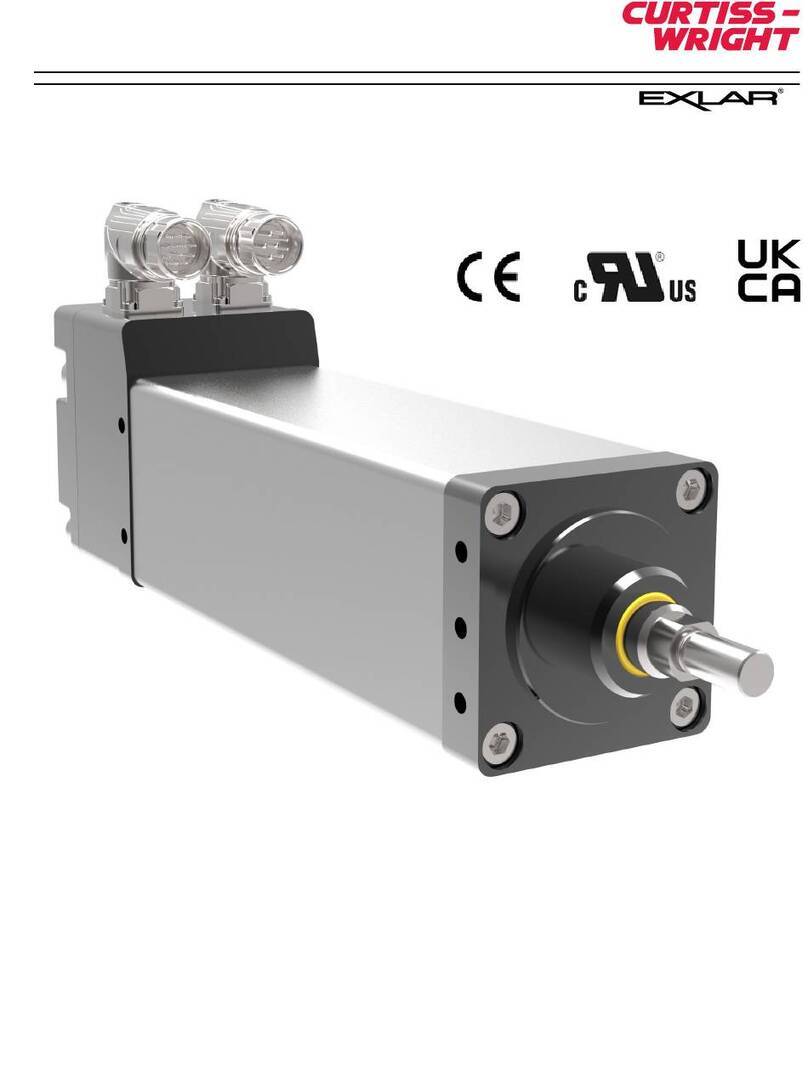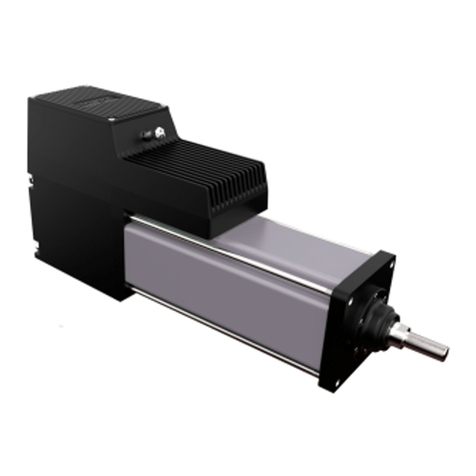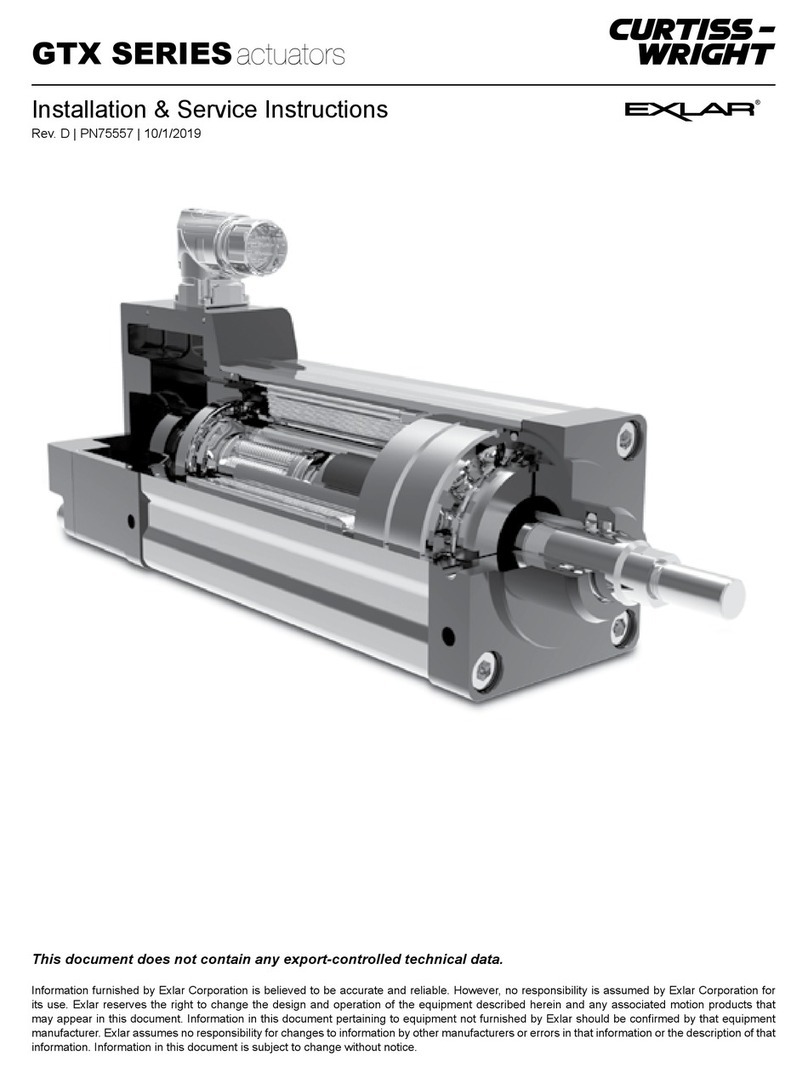
2| Tritex EVA Actuator Installation & Maintenance Instructions Curtiss-Wright | Rev A | PN84148 | 10/15/23
CONTENTS
CONTENTS
1. INTRODUCTION .................................................................................................................. 3
2. HEALTH & SAFETY CONSIDERATIONS.......................................................................... 4
3. PRODUCT INFORMATION ................................................................................................ 5
3.1. PRODUCT FEATURES ........................................................................................................................... 5
3.2. PRODUCT SPECIFICATIONS................................................................................................................ 6
3.3. LABEL & ORDERING INFORMATION ................................................................................................... 7
4. INSTALLATION.................................................................................................................... 8
4.1. PRODUCT DIMENSIONS ....................................................................................................................... 8
4.2. MECHANICAL INSTALLATION............................................................................................................... 9
4.2.1. Mounting & Mechanical Considerations ........................................................................................... 9
4.2.2. Lubrication Requirements................................................................................................................. 9
4.2.3. Actuator Cover Removal................................................................................................................... 9
4.2.4. Actuator Mounting Bolts.................................................................................................................... 9
4.2.5. Conduit Entry.................................................................................................................................... 9
4.3 ELECTRICAL INSTALLATION................................................................................................................ 10
4.3.1. Electrical Installation....................................................................................................................... 10
4.3.2. Power Source ................................................................................................................................. 10
4.3.2.1. Grid Power Supply...................................................................................................................................11
4.3.2.2. Battery and Charging Supply Systems ................................................................................................... 12
4.3.3. Conecting to Terminals ................................................................................................................... 14
4.3.3.1. Ground Connections............................................................................................................................... 15
4.3.3.2. Power Supply Wiring & Fusing ............................................................................................................... 16
4.3.3.3. Control Wiring ......................................................................................................................................... 17
4.3.3.3.1. Analog Input Connections (4-20 mA)............................................................................................. 17
4.3.3.3.2. Analog Output Connections (4-20 mA) .......................................................................................... 18
4.3.3.3.3. Digital Input (DI) & Digital Outpiut (DO) Connections.................................................................... 18
4.3.3.3.4. Digital Input Specications ........................................................................................................... 19
4.3.3.3.5. Digital Output Specications.......................................................................................................... 19
4.4. COMMUNICATIONS .............................................................................................................................. 19
4.4.1. Modbus RTU (RS-485).................................................................................................................... 19
4.4.2. PC Communication (Connecting to the Actuator)............................................................................ 20
4.4.2.1. CBL-T2USB485-M8-xxx Communication Cable...................................................................................... 21
4.5. POSITION TRACKING ON POWER LOSS .......................................................................................... 22
4.6. EXPERT PC TOOL QUICK START........................................................................................................ 23
4.6.1. Quick Start Guide – Generic Lite..................................................................................................... 23
4.7. PRODUCT MAINTENANCE................................................................................................................... 39
4.7.1. Lubrication Renewal Procedure ...................................................................................................... 39
4.7.2. Seal Maintenance............................................................................................................................ 40
4.8. TRANSPORTATION & STORAGE INSTRUCTIONS ........................................................................... 41
4.9. PRODUCT RETURNS ............................................................................................................................ 41
4.10. CERTIFICATIONS & COMPLIANCE ................................................................................................... 41
































